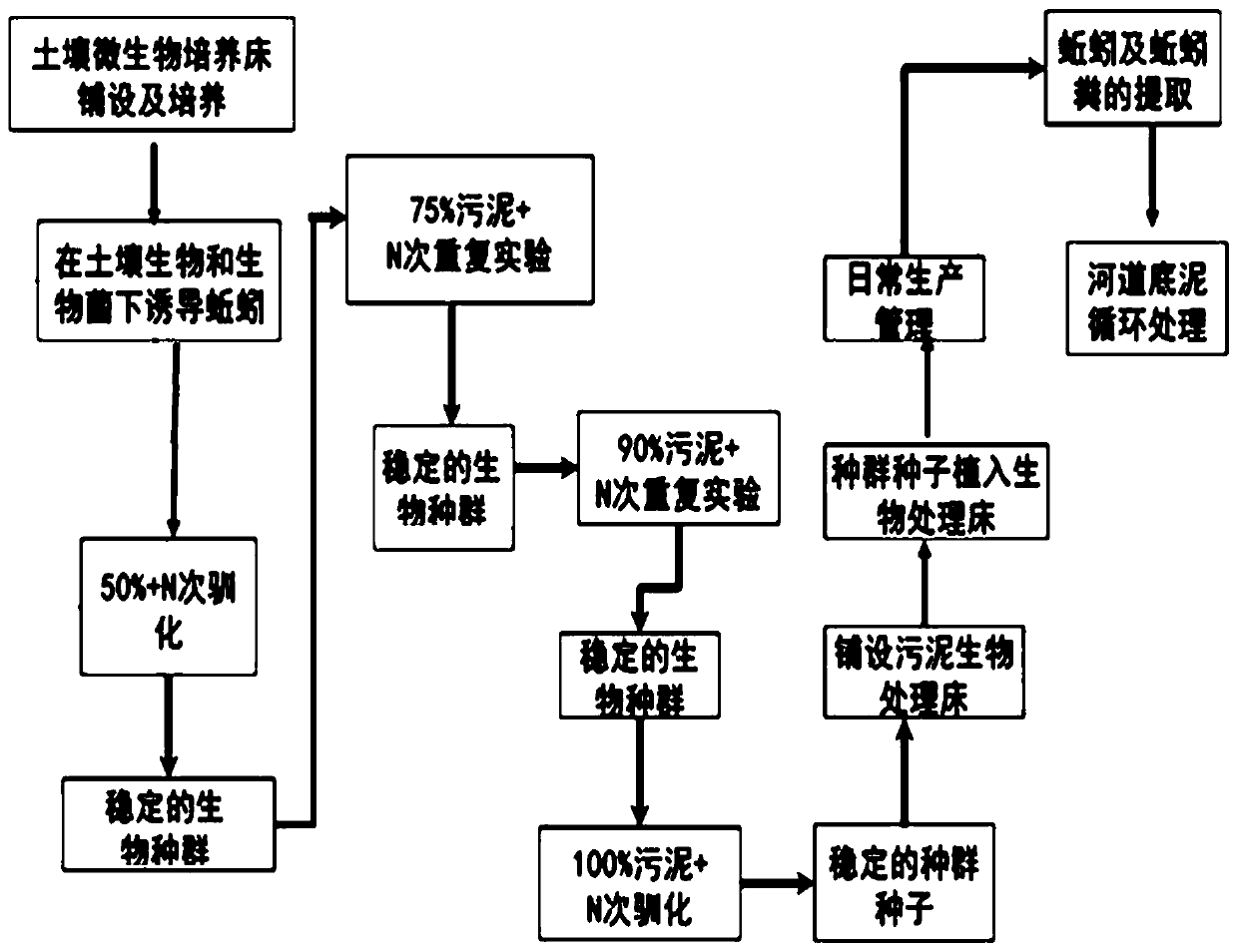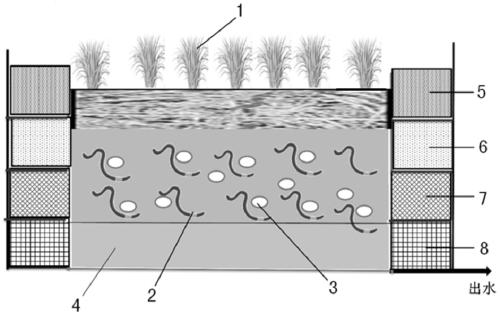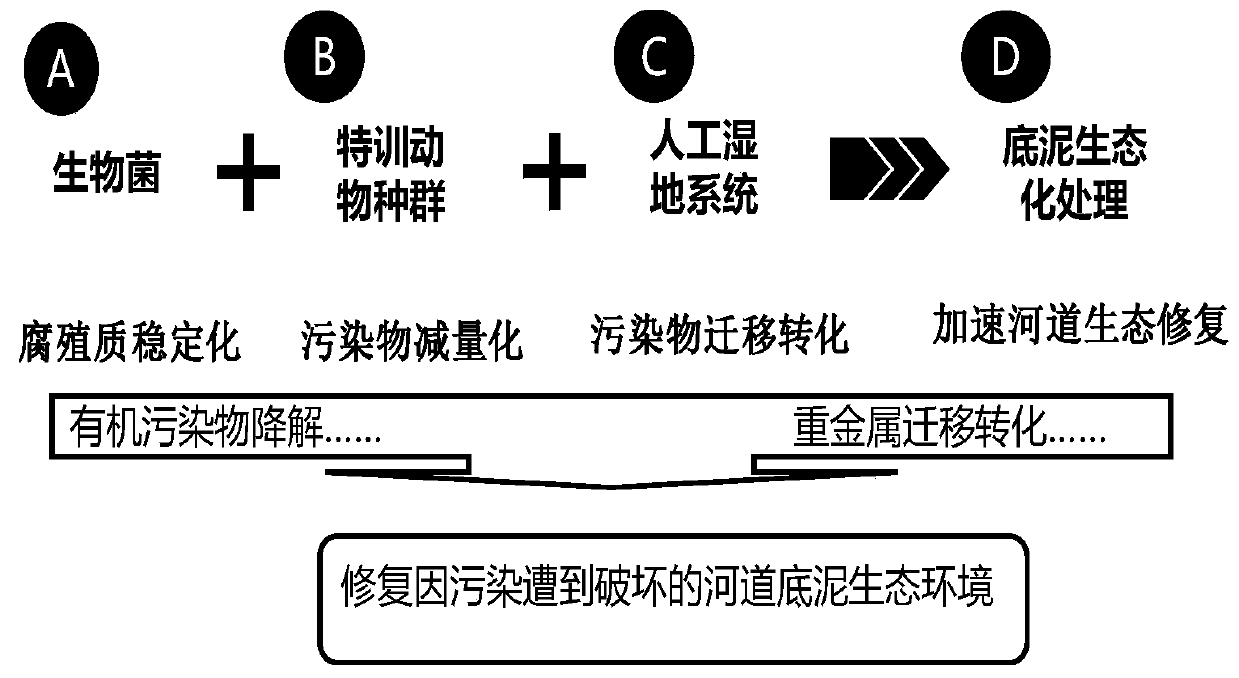Method for treating bottom mud in water by combining biological population with artificial wetland
A technology for artificial wetlands and sediments, applied in the field of environmental treatment, can solve the problems of inability to eliminate the black odor of sludge in a short period of time, unfavorable ecological restoration of polluted river courses, and high cost of river sludge treatment, achieving obvious deodorization effect and high cost. The effect of reducing and reducing the content
- Summary
- Abstract
- Description
- Claims
- Application Information
AI Technical Summary
Problems solved by technology
Method used
Image
Examples
Embodiment Construction
[0038] The present invention will be described in further detail below in conjunction with the accompanying drawings and embodiments. The examples are only used to explain the present invention, not to limit the protection scope of the present invention.
[0039] In order to restore the river bottom mud economically and resourcefully, the present invention proposes a method for treating the river bottom mud by combining animal populations such as biological bacteria, domesticated earthworms and artificial wetlands.
[0040] (1) Domestication of biological bacteria and animal populations
[0041] 1) Biological preparations
[0042] The biological bacteria preparation adopts the bacterial liquid obtained by microbial proliferation and culture. The microorganisms contained in the bacterial liquid can continuously produce a variety of biological enzymes, avoiding the use of a single biological enzyme to reduce the processing capacity due to inactivation. Biological bacteria main...
PUM
 Login to View More
Login to View More Abstract
Description
Claims
Application Information
 Login to View More
Login to View More - R&D
- Intellectual Property
- Life Sciences
- Materials
- Tech Scout
- Unparalleled Data Quality
- Higher Quality Content
- 60% Fewer Hallucinations
Browse by: Latest US Patents, China's latest patents, Technical Efficacy Thesaurus, Application Domain, Technology Topic, Popular Technical Reports.
© 2025 PatSnap. All rights reserved.Legal|Privacy policy|Modern Slavery Act Transparency Statement|Sitemap|About US| Contact US: help@patsnap.com



